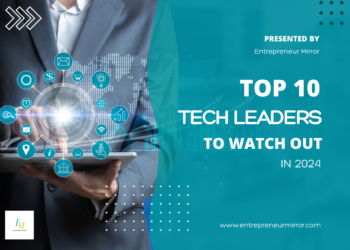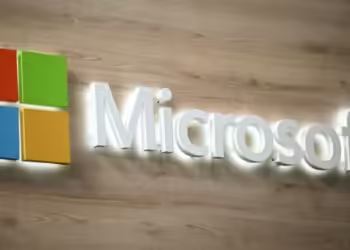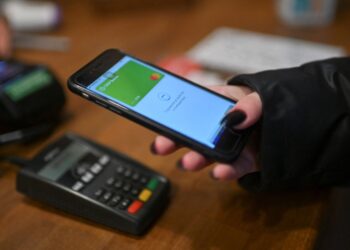Information technology has revolutionized various aspects of human life, and education is no exception. Integrating information technology in education has brought about transformative changes in how students learn, and educators teach. With the advent of digital tools and internet connectivity, the traditional classroom setting has expanded into a vast virtual world, providing unprecedented opportunities for enhanced learning experiences. This article explores information technology’s diverse and profound uses in education, illustrating how it benefits students, educators, and educational institutions.
E-Learning and Online Courses
One of the most significant uses of information technology in education is the rise of e-learning and online courses. Distance learning has made education accessible to learners worldwide, breaking the barriers of time and location. Online courses allow students to pursue education at their own pace, providing flexibility and personalized learning experiences.
Virtual classrooms with interactive tools, video lectures, and real-time discussions enable engaging and interactive learning. Educational institutions and universities have embraced the concept of Massive Open Online Courses (MOOCs), offering free or affordable access to a vast array of subjects. This democratization of education has opened doors for millions of learners globally, bridging educational gaps and empowering individuals from diverse backgrounds.
Personalized Learning and Adaptive Assessments
Information technology facilitates personalized learning, tailoring educational content to individual student needs and learning styles. Intelligent tutoring systems and adaptive assessments analyze student performance and provide customized feedback, addressing specific learning gaps and challenges. This individualized approach enhances student engagement and fosters better learning outcomes.
Educational software and applications can track and monitor student progress, enabling educators to assess each student’s strengths and weaknesses. This data-driven approach empowers educators to create targeted interventions and personalized learning plans, ensuring every student achieves their full potential.
Collaborative Learning and Communication
Technology in education promotes collaborative learning experiences, allowing students to work together on projects and assignments regardless of their physical location. Virtual collaboration tools, such as video conferencing, instant messaging, and collaborative document editing, facilitate seamless communication and knowledge sharing.
Through online forums and discussion boards, students can engage in active discussions, exchange ideas, and gain diverse perspectives from their peers worldwide. This fosters a sense of global awareness and cultural understanding, preparing students to thrive in an interconnected world.
Interactive Learning Materials and Multimedia
Information technology enriches learning by providing interactive learning materials and multimedia resources. Textbooks have evolved into interactive e-books featuring videos, animations, quizzes, and simulations, making learning more engaging and immersive.
For instance, virtual reality (VR) and augmented reality (AR) technologies offer experiential learning opportunities, enabling students to explore historical sites, conduct virtual experiments, and engage in realistic simulations. These technologies bring abstract concepts to life, enhancing comprehension and retention.
Gamification in Education
Gamification has emerged as a powerful tool in education, leveraging the principles of game design to enhance learning experiences. Educational games and gamified learning platforms make learning enjoyable and motivate students to achieve academic goals.
By incorporating elements like points, badges, levels, and challenges, gamification promotes healthy competition and rewards students for their achievements. Gamified learning platforms also offer real-time feedback, allowing students to track their progress and continuously improve their performance.
Access to Information and Online Libraries
The Internet and information technology have revolutionized access to information. Students now have many resources, from online libraries and research databases to educational videos and academic journals. This democratization of knowledge empowers students to explore diverse subjects, conduct research, and deepen their understanding of various topics.
Moreover, cloud-based storage and file-sharing platforms enable easy access to educational materials, making it convenient for students to collaborate, share resources, and work on projects.
Student Assessment and Data Analysis
Information technology streamlines the assessment and evaluation processes in education. Automated grading systems, online quizzes, and computer-based exams reduce the administrative burden on educators and provide timely feedback to students.
Data analytics and learning management systems (LMS) allow educators to analyze student performance data, identify learning trends, and assess the effectiveness of teaching strategies. These insights enable educators to make data-driven decisions and refine their instructional methods to meet student needs better.
Professional Development for Educators
Information technology plays a crucial role in facilitating professional development for educators. Online workshops, webinars, and virtual conferences offer continuous learning and growth opportunities.
Educators can access online courses and resources to stay updated with the latest educational trends, teaching methodologies, and technological advancements. As educators enhance their skills and knowledge, they can create more engaging and effective learning experiences for their students.
Blended Learning
Blended learning combines traditional classroom instruction and online learning, making it a powerful use of information technology in education. In a blended learning environment, students participate in both face-to-face classroom sessions and online activities. This approach offers flexibility while maintaining the benefits of direct interaction with educators and peers.
Educators can leverage technology to provide pre-recorded lectures, reading materials, and multimedia resources that students can access outside the classroom. This allows students to review content independently and come to class prepared for discussions and hands-on activities. Blended learning promotes active learning and fosters student engagement, encouraging students to take responsibility for their learning journey.
Educational Data Privacy and Security
As information technology becomes more ingrained in education, ensuring data privacy and security becomes paramount. Educational institutions collect and store student data, including personal information and academic records. Protecting this data from cyber threats and unauthorized access is crucial to maintaining trust with students, parents, and educators.
Educational institutions must implement robust data security measures and adhere to data protection regulations. This includes encrypting sensitive information, restricting access to authorized personnel, and regularly updating security protocols to avoid potential threats. Also, educators must educate students about online safety and responsible digital citizenship. Students should understand the importance of protecting their personal information and practicing safe online behaviors to safeguard their privacy and well-being.
The diverse uses of information technology in education have redefined the learning experience, making it more accessible, engaging, and effective. From e-learning and personalized learning to gamification and blended learning, technology has opened new avenues for students to explore and excel. However, as technology advances, it is crucial to address privacy and security concerns and ensure that students and educators are equipped with the necessary skills to navigate the digital landscape responsibly.
By mindfully embracing information technology, educational institutions can empower students with the knowledge and skills they need to thrive in the digital age and shape a brighter future for themselves and society. Through a harmonious integration of technology and traditional teaching methods, the role of information technology in enhancing customer experience is sure to leave a lasting impact on the world of education.
Also Read:






























































